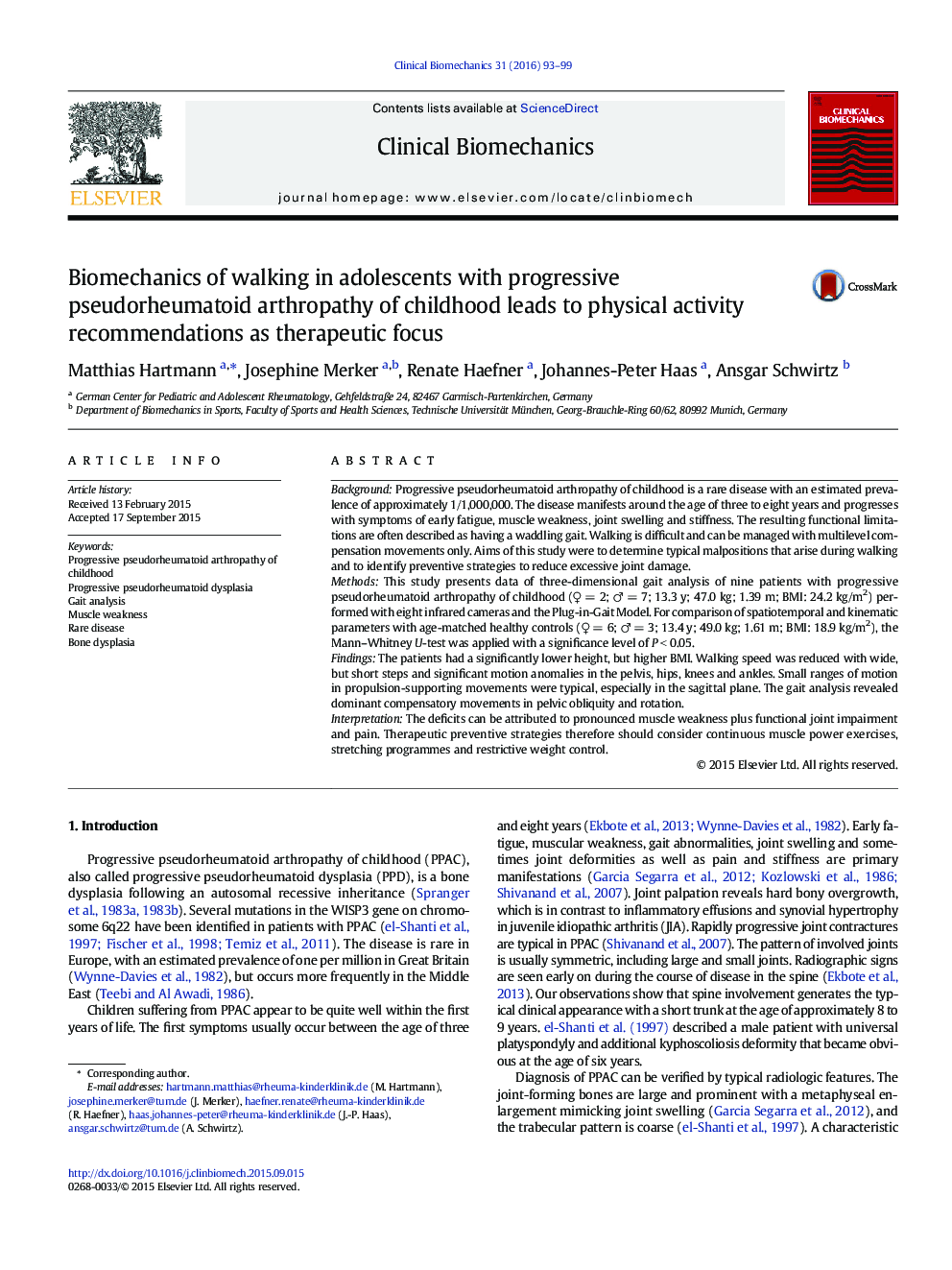| کد مقاله | کد نشریه | سال انتشار | مقاله انگلیسی | نسخه تمام متن |
|---|---|---|---|---|
| 4050174 | 1603747 | 2016 | 7 صفحه PDF | دانلود رایگان |
• Progressive pseudorheumatoid arthropathy of childhood patients walk consistently.
• but with excessive gait deviations and compensatory movements in the pelvis.
• Walking speed is very slow and most problems appear in hip, knee and ankle joints.
• Therapeutic aims are to preserve range of motion in all joints and weight control.
• Physical practise is essential to optimize the muscle power and joint flexibility.
BackgroundProgressive pseudorheumatoid arthropathy of childhood is a rare disease with an estimated prevalence of approximately 1/1,000,000. The disease manifests around the age of three to eight years and progresses with symptoms of early fatigue, muscle weakness, joint swelling and stiffness. The resulting functional limitations are often described as having a waddling gait. Walking is difficult and can be managed with multilevel compensation movements only. Aims of this study were to determine typical malpositions that arise during walking and to identify preventive strategies to reduce excessive joint damage.MethodsThis study presents data of three-dimensional gait analysis of nine patients with progressive pseudorheumatoid arthropathy of childhood (♀ = 2; ♂ = 7; 13.3 y; 47.0 kg; 1.39 m; BMI: 24.2 kg/m2) performed with eight infrared cameras and the Plug-in-Gait Model. For comparison of spatiotemporal and kinematic parameters with age-matched healthy controls (♀ = 6; ♂ = 3; 13.4 y; 49.0 kg; 1.61 m; BMI: 18.9 kg/m2), the Mann–Whitney U-test was applied with a significance level of P < 0.05.FindingsThe patients had a significantly lower height, but higher BMI. Walking speed was reduced with wide, but short steps and significant motion anomalies in the pelvis, hips, knees and ankles. Small ranges of motion in propulsion-supporting movements were typical, especially in the sagittal plane. The gait analysis revealed dominant compensatory movements in pelvic obliquity and rotation.InterpretationThe deficits can be attributed to pronounced muscle weakness plus functional joint impairment and pain. Therapeutic preventive strategies therefore should consider continuous muscle power exercises, stretching programmes and restrictive weight control.
Journal: Clinical Biomechanics - Volume 31, January 2016, Pages 93–99
